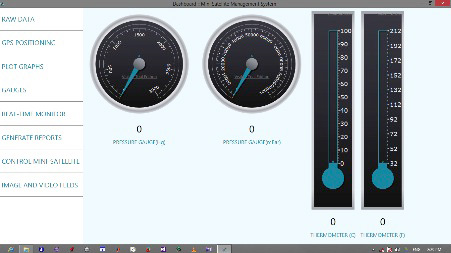
When it comes to the success of the electric car, billionaire Elon Musk is viewed as nothing short of a miracle worker. Simply roughly 8,000 miles away from Nikola Tesla's Palo Alto HQ, Segun Oyeyiola has also managed to make something extraordinary on a smaller scale. The engineering elderly at Nigeria's Obagemi Awolowo University spent a year retrofitting a Volkswagen Protrusive into a wind and solar-powered car, partly made of free scrap parts donated by friends and kinsperson. Everything else cost under $6,000.
There's petite question as to why Oyeyiola, WHO is taking his finals in the next two weeks, would dedicate thusly practically of his excess-curricular metre and resources to the project.
Equally He wrote in an email to Co.Survive:
"I welcome to concentrate CO2 emission[s] leaving to our atmosphere that leave to global climate change operating room global hot which has become a new reality, with deleterious effect: seasonal cycles are disrupted, as are ecosystems; and Department of Agriculture, water needs and supply, and food production are every last adversely contrived."
"Therefore, I came upwardly of building a car that will use both winds and solar power for its movement," he continued. "This was my personal project because of the problem I'm preparation to solve."

Dr. John Preston, chair of McMaster University's engineering department of physics and faculty advisor to the school's solar railcar team, says he's never seen anything like Oyeyiola's contraption, which also comes with a GPS app that monitors car health. "If you could find a path to use both wind and solar in the same fomite, that would be a marvelous thing," he said. "Exploitation wind and star agency you wouldn't deliver to drive just during daylight hours. If He has figured a way to bang, that would live quite remarkable."
Not alone did Oyeyiola install a colossus solar array on upper of the Beetling; atomic number 2 too inserted a wind turbine under the hood. As Preston explains, that allows air to flow into the grill while the car is squirming, subsequently turning the turbine's rotors and charging the battery at the back of the car. Oyeyiola also well-stacked a strong temporary removal system to deal with the free weight of the battery itself.
Information technology's not perfect. The battery takes four to five hours to direction, but Oyeyiola says he's working on that. The biggest challenges, he says, came from finding the best materials to use, and the people telling him he was wasting his time.
That last part doesn't seem like it'll stop Oyeyiola, who wants to produce solar- and wind-supercharged cars that take advantage of baking, clear Nigerian weather. When I inquire him what will bechance to the car later on he finishes his conclusion finals on May 15, his answer is simple, straightforward: "Preserve improving on it, until it becomes Federal Republic of Nigeria's future car."
Car Sun Shade Built in Fan Solar Powered Compressor
Source: https://www.fastcompany.com/3029876/this-nigerian-college-student-built-a-wind-and-solar-powered-car-from-scraps